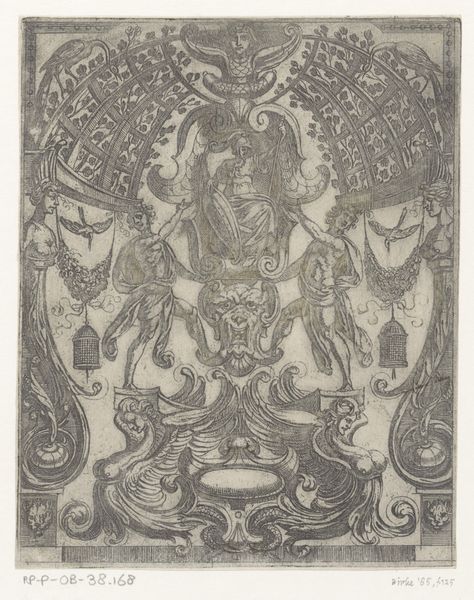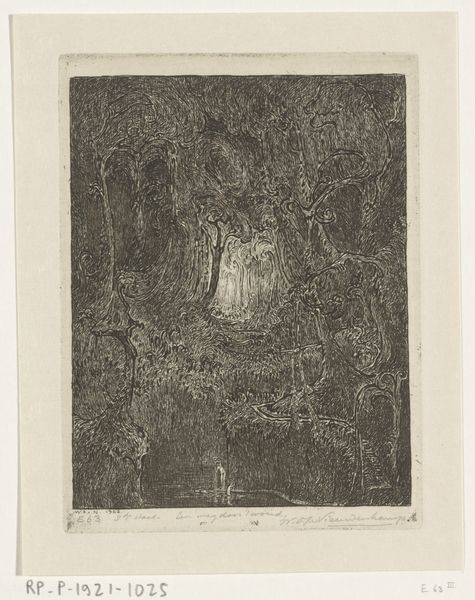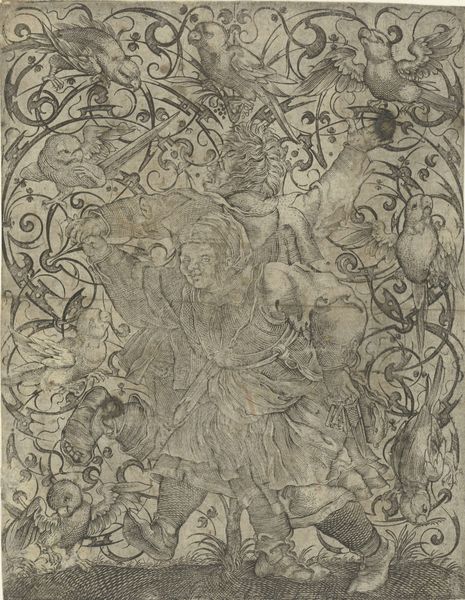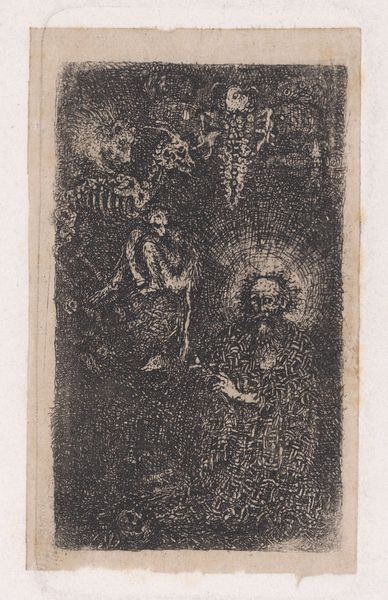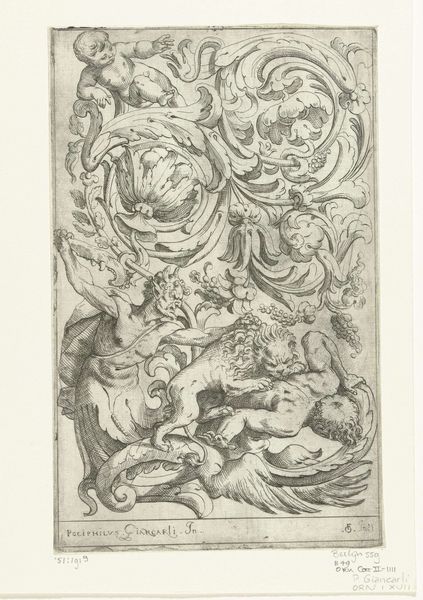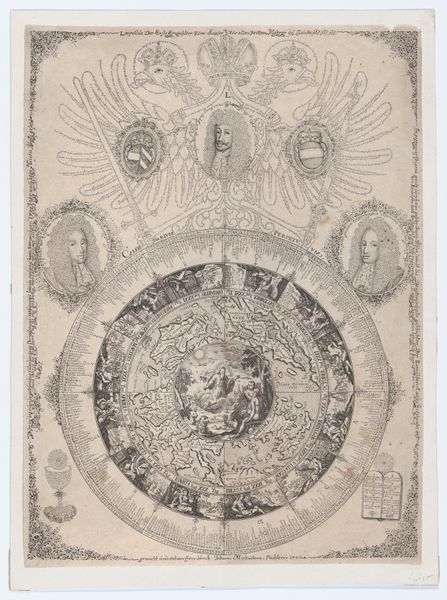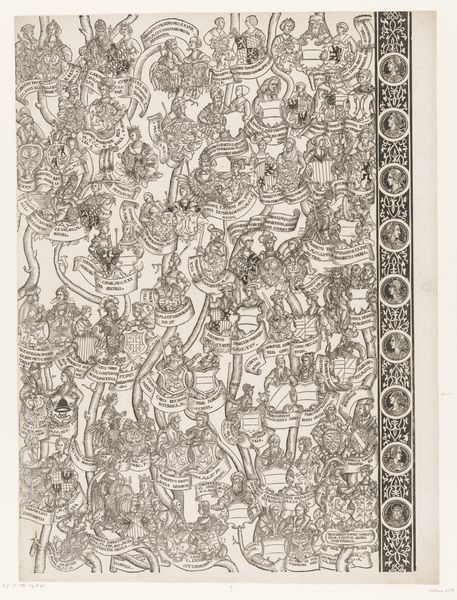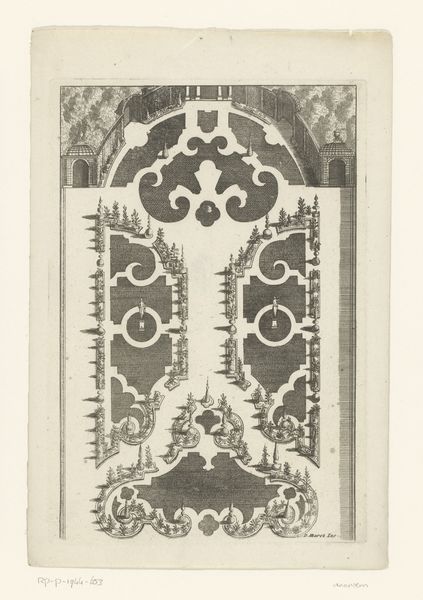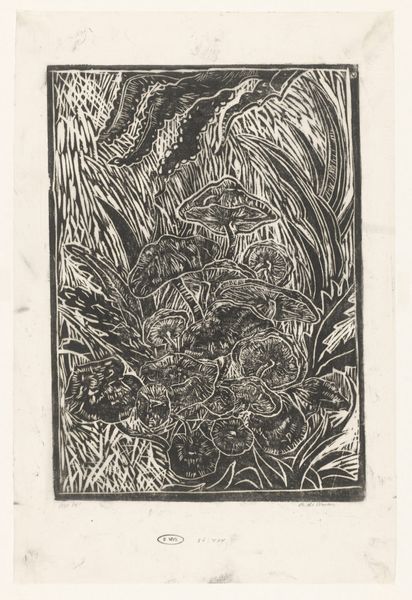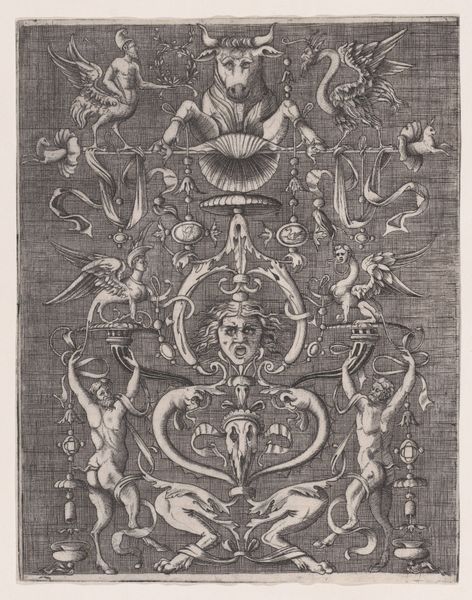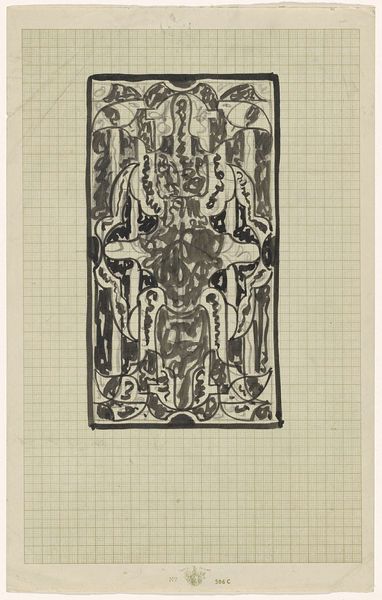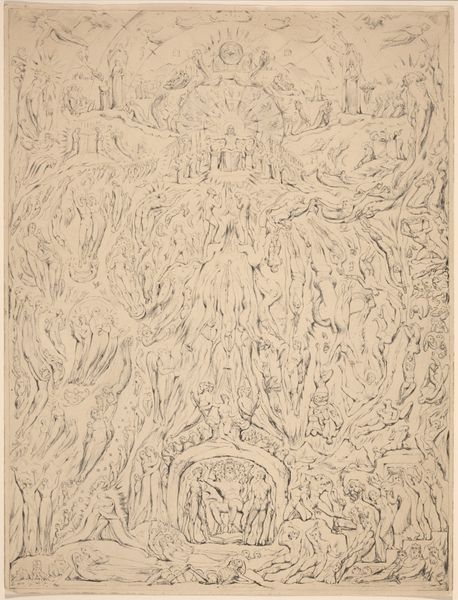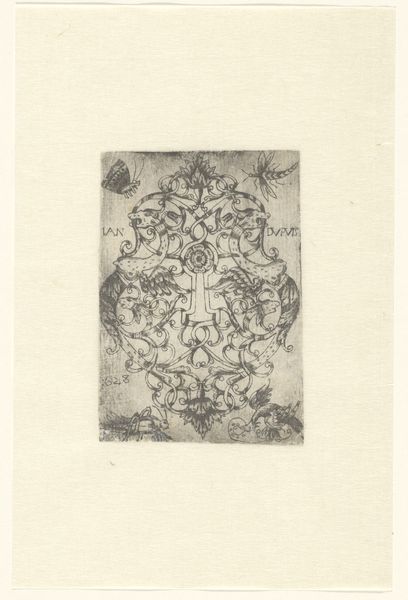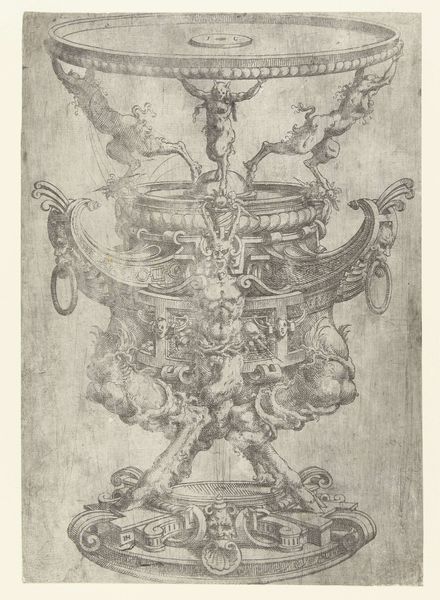
drawing, graphic-art, paper, ink
#
drawing
#
graphic-art
#
art-nouveau
#
pen drawing
#
pen illustration
#
old engraving style
#
paper
#
ink line art
#
ink
#
geometric
#
pen-ink sketch
#
line
#
pen work
Dimensions: height 376 mm, width 223 mm
Copyright: Rijks Museum: Open Domain
Curator: Let’s explore “Slingerende plantmotieven,” a graphic work attributed to Tom Poggenbeek, created sometime between 1882 and 1942. What are your initial thoughts on the piece? Editor: It strikes me as simultaneously intricate and murky. The delicate linework, seemingly done with pen and ink on paper, is almost obscured by the dense layering. There’s a hypnotic quality, though—the way the forms undulate. Curator: Absolutely. Considering the period, this aligns with the Art Nouveau movement, where artists explored organic, flowing forms as a rejection of industrialization. Works like this were not just aesthetic exercises. We must examine this artistic approach in relation to broader shifts in societal views on nature, labor, and even gender roles, especially considering the changing position of women within artistic professions and as subjects. Editor: I can appreciate that. Though I’m primarily drawn to how those looping, geometric shapes interact with the negative space, creating an almost dizzying effect. There’s a tension between order and chaos, wouldn’t you agree? It also appears like a blueprint for design or ornamentation. Curator: Indeed, thinking about how this image functions—potentially as a design motif—opens avenues for interpreting its purpose within the domestic or commercial sphere of the time. Who was this work intended for, and what values was it meant to promote through its aesthetics? Editor: Perhaps a rising middle class with newfound aspirations towards sophistication? Its lack of strong color also seems to hint to its graphic intention. The emphasis would therefore rest on line, shape, and composition. Curator: That’s insightful. Also, who benefits from such artistic interpretations, and are we including narratives from varied socio-economic and cultural perspectives to appreciate it better? Editor: Posing important questions about artistic merit in relation to economic stratification. Analyzing artwork like “Slingerende plantmotieven” calls attention to the subtle dance between formalism and contextual understanding. Curator: And for me it's a reminder that art is not produced in a vacuum and a close reading must also focus on questions of representation. Editor: A perfect sentiment for concluding this interpretation.
Comments
No comments
Be the first to comment and join the conversation on the ultimate creative platform.
